Famous Artists and the Furry Muses Who Inspired Them
Artists have long worked alongside animals, sometimes as companions in the studio and sometimes as direct subjects. Dogs, cats, goats, and birds have appeared in paintings, sculptures, and drawings, not as passing details but as figures that shaped the artist’s eye and choice of subject.
Here are some examples where an animal’s influence can still be traced through the work of celebrated artists.
Pablo Picasso and Lump the Dachshund
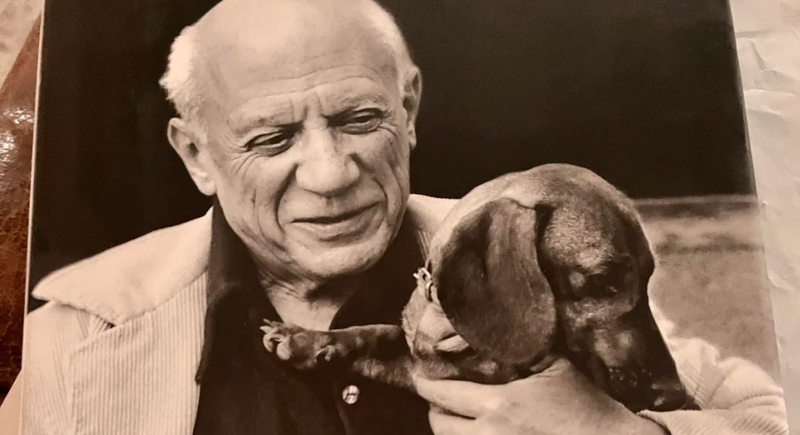
Credit: Reddit
Lump arrived at Picasso’s home with photographer David Douglas Duncan in 1957. The dachshund stayed and appeared in several works, including a single-line drawing and a painted ceramic plate. Lump’s long body and calm posture suited Picasso’s style, which favored strong shapes and deliberate lines.
Frida Kahlo and Her Animal Companions
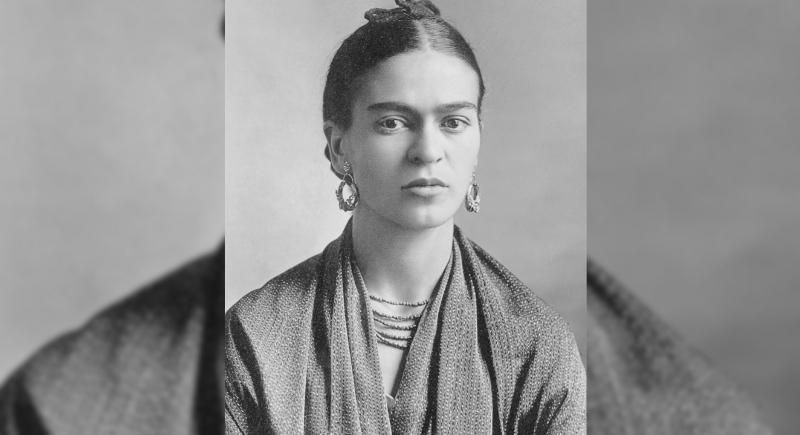
Credit: Wikimedia Commons
You notice animals in Kahlo’s paintings holding the same weight as people because they came directly from her daily life. At her Casa Azul home in Mexico City, she lived among parrots, monkeys, a deer, and Xoloitzcuintle dogs, usually keeping them nearby during her recovery periods.
Andy Warhol’s Cats and Endangered Animals
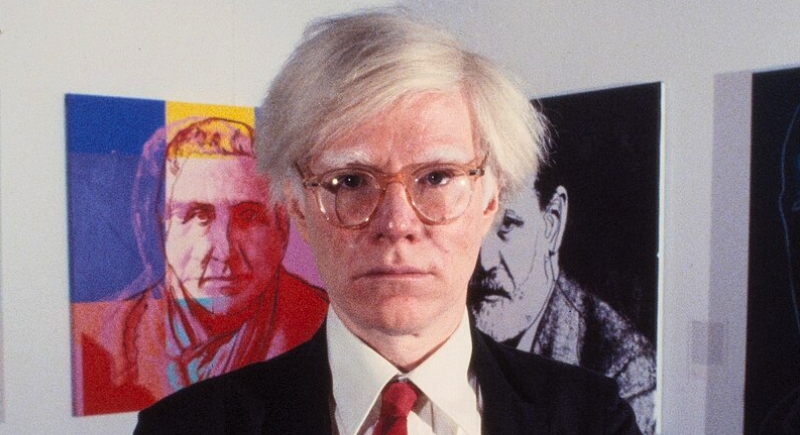
Credit: Wikimedia Commons
Warhol lived with several cats, many named Sam, before he kept dachshunds. In the 1950s, he collaborated with his mother on a book of cat drawings. Decades later, in 1983, he created the Endangered Species series, which featured animals like the Siberian tiger and African elephant. These prints used the same bright, graphic style as his portraits of public figures.
Joan Miró and the Farm Animals of Catalonia

Credit: Wikipedia
Much of Miró’s work uses bold lines and simplified shapes to create playful, abstract forms. That style grew from years of watching animals. He was raised in rural Catalonia, where he spent his childhood surrounded by livestock. He also studied how they moved and carried themselves. In the 1970s, he produced lithographs of cats and other creatures using minimal marks.
Augusta Savage’s Early Clay Animals
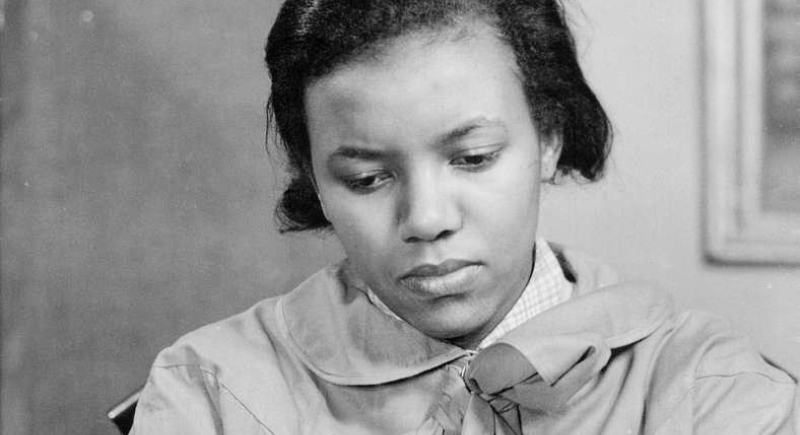
Credit: picryl
Augusta Savage shaped ducks, pigs, and chickens from local clay while living in Florida as a child. She sold them at fairs and used the income to support her early studies. Teaching clay modeling classes in high school helped her refine her technique. These small figures developed her ability to capture personality and movement with limited detail.
Franz Marc and Russi the Shepherd
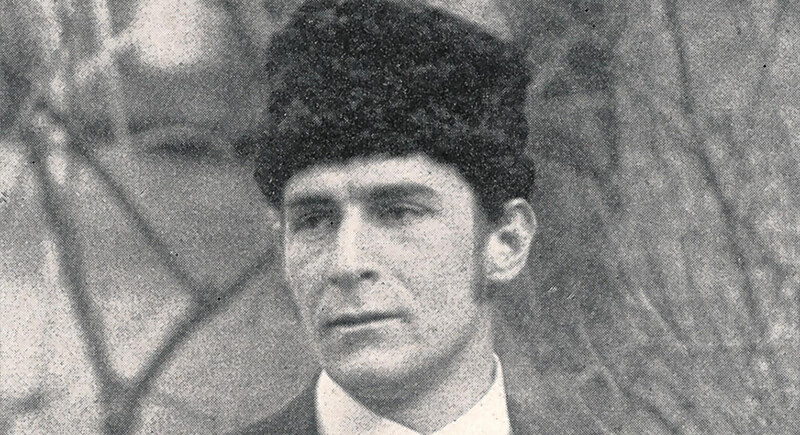
Credit: Wikipedia
German painter Franz Marc believed animals represented the purity absent in human life. His Siberian Shepherd, Russi, can be seen in Dog Lying in the Snow and other works. Marc used bright, symbolic colors to portray animals as part of a spiritual vision. The dog also accompanied him in daily life to provide him with a direct and constant subject to study.
Pablo Picasso and Esmeralda the Goat
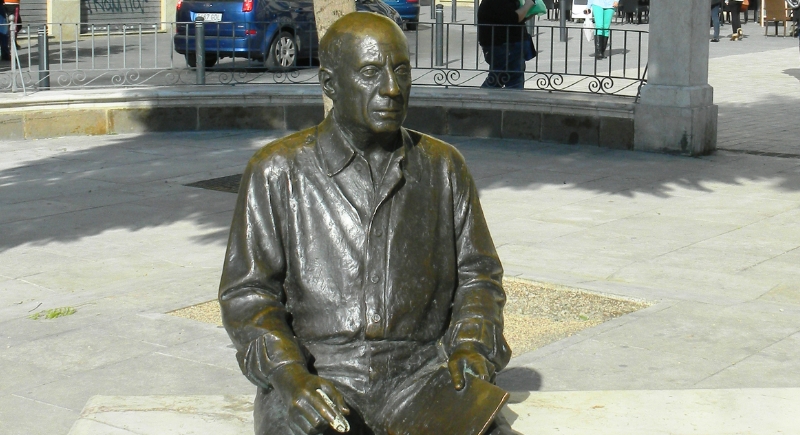
Credit: Wikimedia Commons
A goat became one of Picasso’s most unexpected muses. Esmeralda lived at his home in the south of France and wandered into his studio regularly. Her changing posture, distinctive proportions, and unpredictable movements gave him a subject rich with variation. She was there in sculptures, drawings, and decorated ceramics.
Frida Kahlo’s Monkeys, Fulang Chang, and Caimito
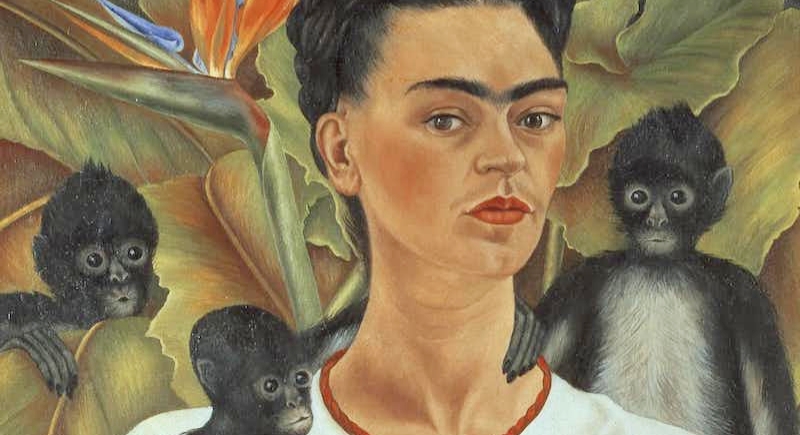
Credit: fridakahlo
If you look at Kahlo’s Self-Portrait with Monkeys, two spider monkeys frame her face and shoulders with an almost human closeness. They were Fulang Chang, a gift from Diego Rivera, and Caimito de Guayabal, who arrived later. Both lived with her at Casa Azul and were included in her work.
Andy Warhol and Archie the Dachshund
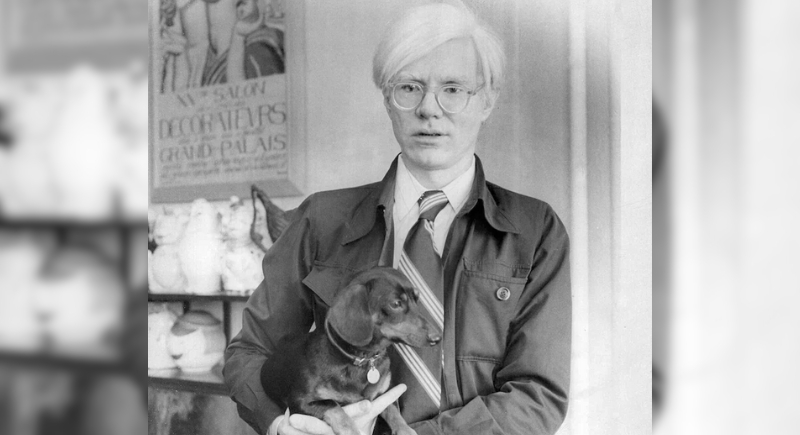
Credit: Duncan Miller Gallery
Archie accompanied Andy Warhol to art openings, interviews, and public events, often sitting in his lap. Warhol painted him and his other dachshund, Amos, in bold pop art colors. The canine became integrated with Warhol’s public image, could be seen in images, and even substituted for the artist when questions became uncomfortable.
Lucian Freud and Pluto the Whippet
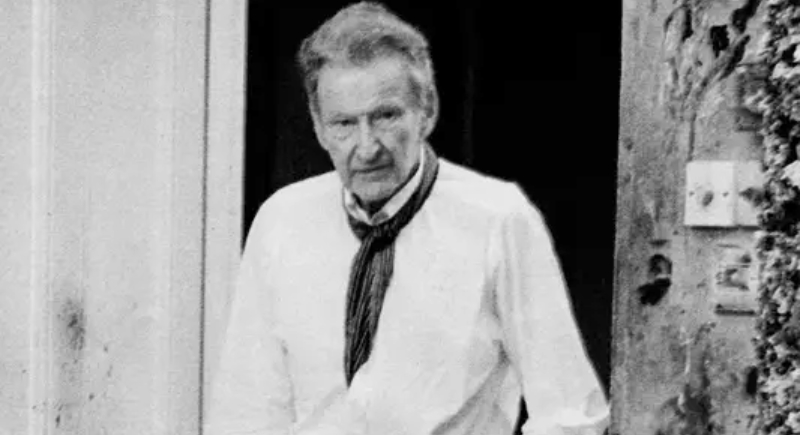
Credit: Piano Nobile
In 1988, Lucian Freud brought home a whippet puppy he named Pluto, which kicked off a twelve-year presence in his studio. The dog was featured alone and alongside human sitters, painted with the same unflinching detail Freud gave to people. He valued Pluto’s natural ease in the studio, which contrasted with the guarded manner of human models.
David Hockney and His Dachshunds Stanley and Boodgie
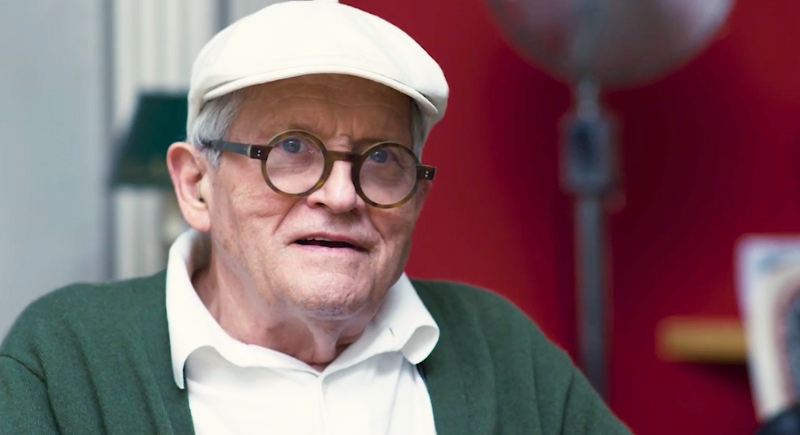
Credit: Youtube
The Dog Days series stands out as one of Hockney’s most intimate bodies of work. It captures various moments with his dachshunds, Stanley and Boodgie. The portraits, painted in the early 1990s, show the pair resting together on cushions in soft light.
Georgia O’Keeffe and Her Chow Chows
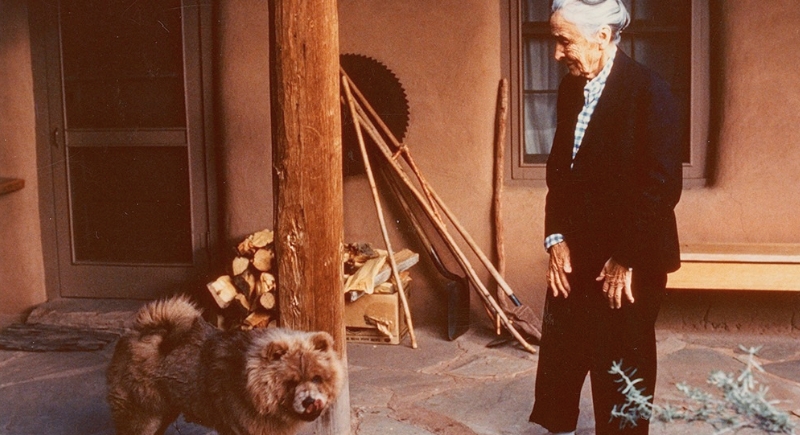
Credit: Instagram
For those familiar with O’Keeffe’s paintings, the strong outlines and solid forms often mirror the physical presence of her Chow Chows, Bo and Chia. She called them “Little People” and kept them close at her New Mexico home, where they frequently appeared in photographs.
Henri Matisse and His Cats
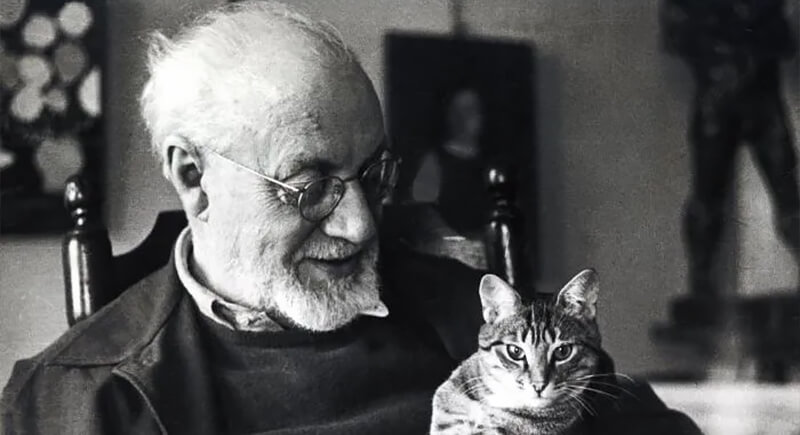
Credit: katzenworld
Matisse’s cats—Minouche, Coussi, and la Puce—were constant companions during his later years in Vence. They stayed near his bed or worktable as he recovered from surgery and worked on his cutouts. Pictures show them settled in the studio, a routine that surrounded his projects.
Tsuguharu Fujita and Mike the Tabby
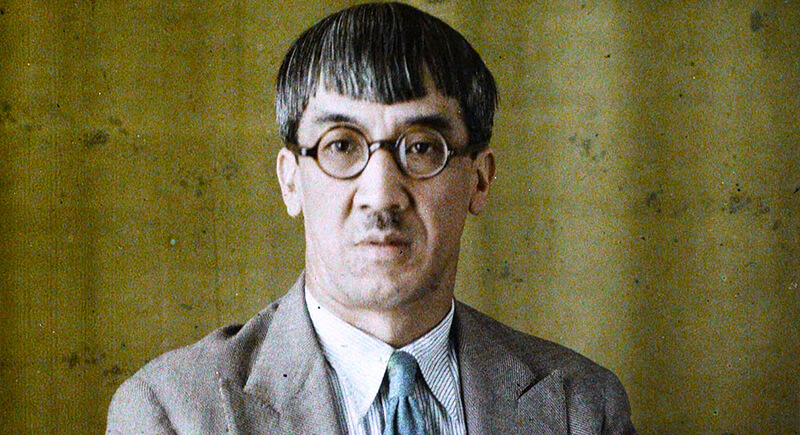
Credit: Wikimedia Commons
Precision shaped A Book of Cats, Fujita’s 1930 series of twenty etched plates. A number of these works were based on Mike, a tabby who had followed him home in Paris. The animal appeared in various self-portraits and gave Fujita a familiar subject for repeated observation.
Theophile Steinlen and Montmartre’s Cats
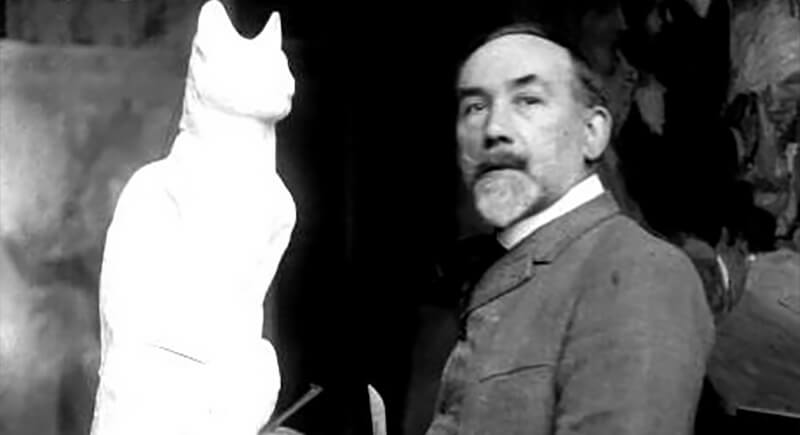
Credit: Wikipedia
Living in an area filled with street cats, Steinlen found endless subjects in the animals of Montmartre. He depicted them in posters, paintings, and sketches, including the well-known Le Chat Noir advertisement. Many products show cats sleeping or stretching, which allowed him to study their shape and texture.